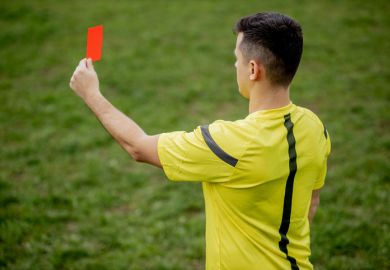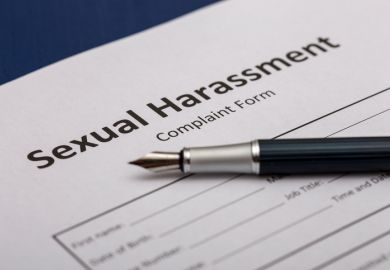North America’s top research universities collectively promised to strengthen their fight against sexual harassers by sharing internal investigative findings to prevent abusers escaping sanctions by moving between institutions.
Meeting this week, the presidents and chancellors of the 66-member Association of American Universities agreed to pursue that goal by developing employment contract language on their campuses that would legalise such cooperation.
The commitment by the AAU leaders also includes steps to ensure that investigations into sexual misconduct reach completion, regardless of whether the accused harasser has moved on to other employment.
The AAU represents the biggest research universities in the US and Canada, and the agreement among its leaders follows years of work within its organisational structures and beyond to understand and confront sexual abuse.
“Our members recognise this as a problem,” said the AAU’s president, Barbara Snyder, a former professor of law and president of Case Western Reserve University.
Such policies, if ultimately enacted across the range of state legal structures, would be groundbreaking in US higher education, said Melissa Carleton, an Ohio-based attorney who specialises in sexual abuse in academia.
Hurdles remained, but “it seems like a pretty big deal”, said Ms Carleton, an expert in Title IX, the federal civil rights law that prohibits sex-based discrimination in US education.
Both Professor Snyder and Ms Carleton conceded potential legal and political roadblocks on the pathway to implementation of the AAU initiative. Even if successful, they acknowledged, any cross-institution sharing of internal investigative findings almost certainly could be applied only to faculty and staff signing new employment contracts.
But given the size of the problem – a landmark 2018 study by the National Academies of Sciences found that 58 per cent of US academic employees experience some form of sexual harassment, making the sector second only to the military in prevalence – the university leaders were determined to push ahead, Professor Snyder said in an interview.
It is another sign that US academic research and its funders are moving beyond the years of mostly studying the problem of sexual harassment and abuse, and moving more decisively into action. Earlier this year, the US National Institutes of Health, the largest single provider of federal money for basic research, said that it cut off grant support for 75 researchers because of sexual harassment and other kinds of personal misbehaviour since 2018. Also this year, the National Academies, for the first time since its founding in 1863, expelled two members over sexual harassment allegations and voted in a new annual class that is almost half women. The American Association for the Advancement of Science, the world’s biggest general science society, also has approved such membership revocations.
The AAU’s new policy commitment arose from a study group led by Carol Folt, president of the University of Southern California, and Douglas Girod, chancellor of the University of Kansas. “You never know when you put together one of those groups exactly what they’re going to end up recommending,” Professor Snyder said. “But in this case, they believed” in the need to change hiring practices, she said, “after a lot of discussion with leaders from across our campuses”.
The stated ambition of US university leaders to share investigative findings about sexual abusers still leaves some delicate questions to be decided, Ms Carleton said, such as the handling of cases where an accuser wants to withdraw a complaint.
And even if universities find solutions there, they will still need other steps to counter the epidemic of sexual misbehaviour in academia, Ms Carleton said. Chief among them, she said, was the creation of consistent rules about if and when employees can have romantic and sexual relationships with students.
That may be a useful area for the AAU to consider next, Professor Snyder said. “But right now,” she said of the commitment by AAU leaders to share internal investigative findings, “we feel really good about this as a step forward.”
Register to continue
Why register?
- Registration is free and only takes a moment
- Once registered, you can read 3 articles a month
- Sign up for our newsletter
Subscribe
Or subscribe for unlimited access to:
- Unlimited access to news, views, insights & reviews
- Digital editions
- Digital access to THE’s university and college rankings analysis
Already registered or a current subscriber?








